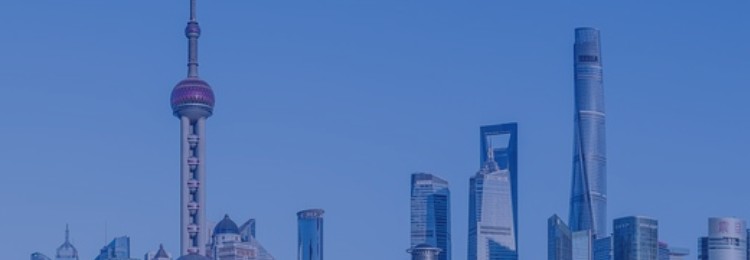"Exhibition Service Model Innovation Facilitates the Construction of an International Consumer Center City - Summary and Reflection on Shanghai's Exploratory Practices" is the latest article by Professor Zhang Min, Executive Dean of the Shanghai MICEE Institute and Ph.D. supervisor at Shanghai University. It was published on People's Daily Online on August 25. The original title of the article is "How Shanghai's Exhibition Industry Innovates and Explores Services for the Construction of an International Consumer Center City."
To cultivate and build an international consumer center city, the exhibition industry should certainly be recognized for its unique advantages. Its purposeful planning, targeted invitations, social mobilization, competitive displays, diversified choices, interactive cognition, and decentralized decision-making make it a holistic leading strategic platform for consumer resource allocation, urban service mobilization, consumption atmosphere rendering, and institutional environment building. To accelerate the building of specialized, characteristic, regional international consumer center cities, form a new pattern of integrated development of domestic and foreign markets with the domestic market as the main body, exhibition service model innovation is needed to leverage its market-oriented platform functions, expand consumption scale, improve consumption quality, lead consumption trends, attract consumption reflux, and focus on improving consumption supply, perfecting consumption facilities, and optimizing consumption environment.
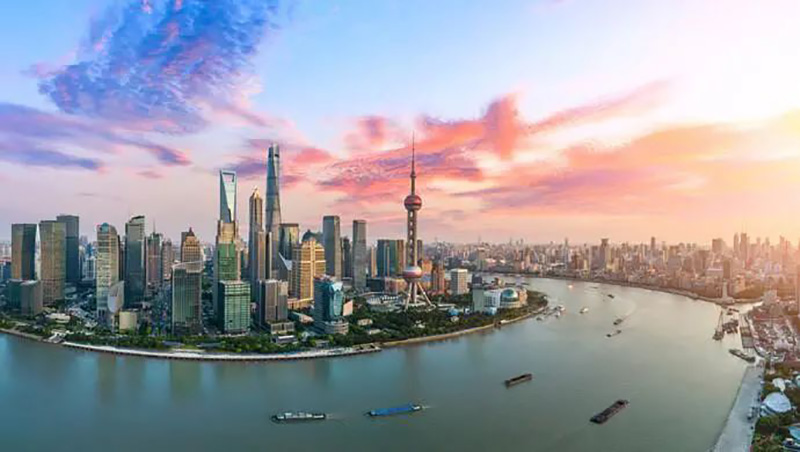
Basic Mechanisms
To leverage exhibitions to promote consumption, it is necessary to grasp their mechanism of action. Exhibitions are primarily market-oriented platforms for intermediate transactions, not retail sales and exhibitions for terminal consumption. Their mechanism of action is far from being as simple as it seems. Consumption refers to the behavior and process of satisfying the life needs of social members through goods or services, and is thus seen as the purpose and realization of value production, and even an indispensable condition for the reproduction of labor. Consumption is vital to human survival and development. It not only has historical relativity and changes with the advancement of productivity, but also adapts to personalized needs with endless richness and spontaneous dispersion.
As an intermediary between production and circulation, exhibitions are good at gathering supply and demand scattered around the world. Through communication and interaction, they achieve cognition, understanding, trust and credit, and eventually lead to transactional decisions, completing the gathering and dispersal of supply and demand, improving circulation efficiency, and smoothing economic circulation. Interestingly, the inherent connection between exhibitions and cities lies precisely in gathering: gathering of branded goods, innovations and creativity, buyers and sellers, supply-demand interactions, consensus on rules, market services, industry media, and infrastructure. The difference between the two lies in the difference between intermediate transaction services and comprehensive market services. This aggregation function that exhibitions are commended for is usually referred to as a resource allocation mechanism. If the gathering objects are consumer goods, it forms consumer exhibitions. In this sense, the exhibition industry should become a resource allocation strategic platform for international consumer center cities.
Studies show that Shanghai's exhibition industry performance indicators led global cities in 2019: 1. The total exhibition space was 19.41 million square meters, accounting for 13.05% nationwide; 2. The international exhibition space was 15.0265 million square meters, with an internationalization rate of 77.42%; 3. 14 top 100 global brand exhibitions were held in Shanghai, accounting for 61% nationwide, ranking first among global exhibition cities. Specific investigations show that in 2019, the exhibition space of consumer exhibitions in the Shanghai exhibition market was 8.6568 million square meters, accounting for 44.60% of the total. It mainly involved automobiles, textiles and apparel, food and beverages, home furnishings, sporting goods, photographic equipment, leisure tourism, fashion and art, pharmaceutical health care, consumer electronics, transportation, logistics and distribution, laundry and cleaning, etc. Among them, world-renowned exhibitions include the Shanghai Auto Show, Furniture Show, Art Basel, Digital Entertainment Expo, Bicycle Show, Pet Show, Baby and Child Expo, Wedding Photography Equipment Expo, Food and Beverage Expo, Sporting Goods Expo, and more. Their main role is to conduct market-based allocation of global consumer resources.
It is noteworthy that the market-based allocation of consumer resources relies not only on horizontal division of labor industry exhibitions serving numerous brands as mentioned above, but also on vertical division of labor process exhibitions serving individual brands. However, the latter are often independently organized by multinational corporations, such as Apple or Huawei press conferences and experience exhibitions. The participants are mostly brand producers, supporting enterprises, consumers or potential consumers, relevant media, and the exhibition scales are generally smaller. They are often held in hotels, brand experience halls and other venues with exhibition businesses.
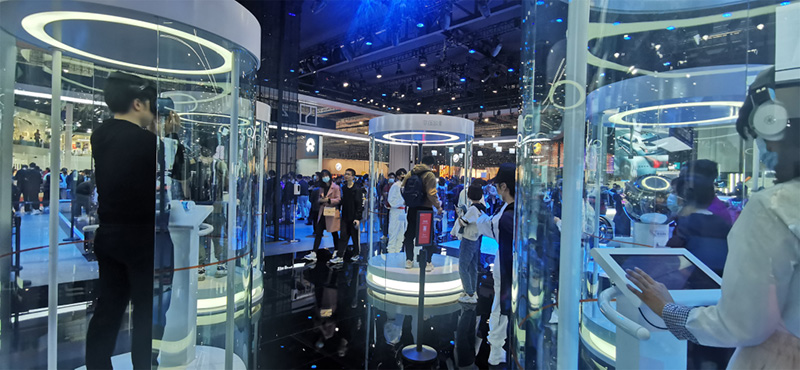
City Mobilization
Shanghai is one of the first batch of domestic trillion-level cities in social retail sales. In 2019, the total retail sales of consumer goods reached RMB 1.35 trillion, ranking first among cities nationwide for three consecutive years. New business forms and models such as e-commerce are thriving. E-commerce transactions exceeded RMB 3.3 trillion, a year-on-year increase of 14.7%, accounting for about 10% nationwide. At the same time, the internationalization level continues to increase. Shanghai ranks first nationwide in the number of first stores and flagship stores, second globally in the concentration of global retailers, and over 90% in the concentration of internationally renowned high-end brands. The city’s imports of apparel, cosmetics and automobiles respectively account for 69.9%, 47.3% and 36.3% nationwide. It has become the first choice for international brands to enter the Chinese market and a gathering place for China or Asia-Pacific headquarters.
To build an international consumer center city, it is necessary to coordinate domestic and foreign trade and urban wholesale and retail industries, starting with comprehensive market services. Based on the principles of government guidance and market dominance, emphasizing innovative integration, scientific regional linkage layout, standing on the present and looking into the future, Shanghai has introduced a series of powerful measures to boost consumption, mobilizing all parties in urban services to participate. Notably, at the core and playing a leading role is the new urban festival "May 5 Shopping Festival" innovatively held by Shanghai in 2020. The logic behind this is that comprehensive market services for urban general mobilization have already gone beyond the field of intermediate transaction-based production services, entering the categories of living services, social services, infrastructure, and even public services. Its coordination and organization functions need to be undertaken by new urban festivals led by the government.
The "May 5 Shopping Festival" is a large-scale consumer festival exhibition activity based on the Shanghai Shopping Festival developed over the years. It launched a new theme of "Citywide Discount Season" to provide people with a sense of gain, create a festive atmosphere and joyful happiness. Its inherent framework is the principle of "government-led, enterprise-based, market-oriented operation". Spanning the entire second quarter, it runs through the Labor Day, Children's Day, Dragon Boat Festival and even China Brand Day and other festivals. The goal is to boost "five major consumptions" of emerging consumption, leisure consumption, auto consumption, information consumption and home furnishing consumption, initiate "four major economies" of premier economy, night economy, brand economy and duty-free economy, and create a "consumption environment" of honesty, trustworthiness, reassurance and convenience. Major commercial enterprises and e-commerce platforms participated extensively to achieve "thousands of enterprises and shops mobilized, activities every day and highlights every week". It focused on boosting consumption confidence and unleashing consumption potential to continuously promote consumption upgrade in quality and scale.
During the shopping festival, major commercial districts, streets, shopping malls, supermarkets, and restaurant chains across the city such as Nanjing Road, Huaihai Road, Lujiazui, Xujiahui, Wujiaochang, Hongqiao rolled out large-scale discount activities. Participating entities offered real discounts and benefits to consumers. In 2020, Alibaba invested 9.2 billion yuan in subsidies across 12 business sectors, with sales growth of 37% year-on-year. Pinduoduo issued over 3.5 billion yuan in cash and consumption subsidies, driving online and offline sales of over 20 billion yuan.
In 2021, the shopping festival's theme was updated to "Global Debut Season" and "Citywide Discount Season", further linking up with the "National Consumption Promotion Month" and "Coordinated Domestic and Foreign Trade, Coordinated Yangtze River Delta". That year, the city’s total retail sales of consumer goods in May increased by 16.4% year-on-year. Specifically, offline consumption was RMB 499.1 billion, up 12% year-on-year; online consumption was RMB 290.5 billion, up 14% year-on-year. By category, sales of high-end goods increased 49% year-on-year, gold, silver and jewelry increased 28%, cosmetics increased 14%, food increased 16%, and automobiles increased 12% year-on-year. Consumption upgrading is becoming a reality.
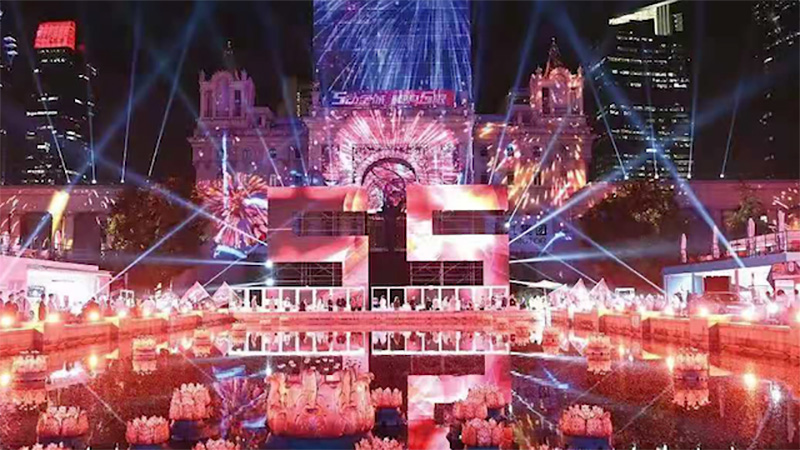
To accelerate the formation of a new development pattern dominated by domestic demand, accelerate the cultivation of an international consumer center city, we need both planned and gradual advancement, and the five major cities to forge ahead and accumulate experience, with the ten city clusters exerting continuous efforts to attack in turns, jointly promoting high-quality development and building a new development landscape. To this end, we must accelerate the formation of a consumption supply with merchants gathered in clouds, accelerate the cultivation of a premier economy with distinct characteristics, accelerate the building of world-renowned consumption business districts, accelerate innovation in diverse consumption models, accelerate the creation of a consumption environment that attracts people from afar, and continuously make new breakthroughs in building an international consumer center city.
Consumption as final demand is the most basic, stable and lasting driving force for economic growth. Developing commerce, boosting consumption, and building an international consumer center city represent the overlay and amplification of a city's core functions. It is Shanghai's inevitable choice to build itself into a hub of the domestic big circulation and a strategic link between domestic and international dual circulations. In recent years, Shanghai has successfully held the China International Import Expo and initiated the "May 5 Shopping Festival", continuously improved the business environment, and steadily built the "Shanghai Shopping" brand. Looking ahead, it is even more important to seize opportunities and build on our momentum. While meeting Shanghai's consumption needs, we will also serve consumption upgrading in the Yangtze River Delta and across the country. While strengthening ourselves as a hub for goods and services, we will strive to become a leader in consumption trends, a definer of quality and excellence, and a competitive field of efficiency. While boosting domestic consumption, we will attract global quality goods and services domestically and export Chinese trends and products internationally, striving to serve as a "transit station" and "bridgehead". While promoting market prosperity, we will also strongly boost efficient circulation, innovative production, optimized supply, improve economic circulation efficiency, and empower Shanghai's "five centers", "four key functions" and "five economies".
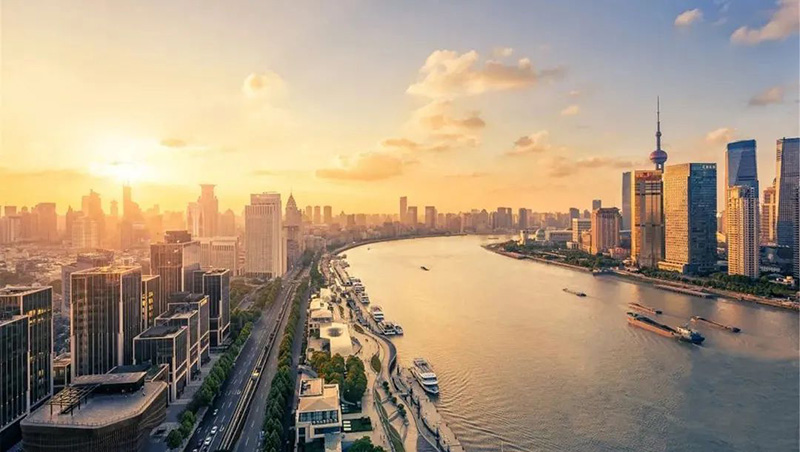
To facilitate the building of an international consumer center city, the exhibition industry must truly enhance thinking and awareness, treating consumer exhibitions as a proper, main and glorious undertaking, making determined efforts and racking brains to strengthen and improve them, and thoroughly eliminating passive attitudes of indifference and wait-and-see. It must consciously integrate into the mainstream and take initiative to serve the overall situation, further clarifying the content and tasks of exhibition services, clarifying what it can do, what it should do, and how it can do better. It must give full play to the functions of exhibitions, continuously improve service capabilities and standards through innovative services, and strengthen itself in urban development.
The exhibition industry is a content industry. To build an international consumer center city, the focus of the exhibition industry is first to build a hub for consumption resource gathering between domestic and foreign markets. Under the lead of the China International Import Expo, build a global hub for premium consumer goods. Continue to amplify the spillover effect. Make great efforts to host two major series of consumer exhibitions, including horizontal division of labor industry exhibitions and vertical division of labor process exhibitions. Accelerate the "Global Consumer Brand Gathering Plan" to attract international consumer brand headquarters to Shanghai, build up domestic manufacturing consumer brands, and use quality consumer goods from the two markets to meet people's needs for a better life and improve the efficiency and level of the consumer supply side.
Second, mobilize multiple fields of urban departments to improve quality and expand consumption. Under the organization and guidance of the "May 5 Shopping Festival", the "Global New Product Premiere Season" leads new product consumption, initiating the International Beauty Festival and National Trend New Product Design Competition. "Tasting Magic City" leads catering consumption, rolling out food carnivals, gourmet festivals, Shanghai snack festivals, cooking competitions, global food festivals, eat-wandering-punch card activities. Carnival activities lead auto consumption, holding brand exhibitions, new product cloud launches, test drives, and auto cultural tourism. Citizen culture festivals lead culture and tourism consumption, launching food travel seasons, shopping travel seasons and other themed travel seasons. Home furnishing festivals lead home furnishing consumption, fitness festivals lead public fitness consumption, senior care festivals lead elderly assistive device consumption, and nightlife festivals lead nighttime consumption to light up "Night Shanghai".
Third, upgrade the development of local characteristic small, medium and large festivals and events. Following the lead of Shanghai Fashion Week, trend culture music festival, Yu Garden Lantern Festival, Shanghai Tourism Festival opening parade, Shanghai International Marathon, carefully design featured activities based on time, place and events, to help build a new highland leading global consumption trends, a global debut place for new products, a professional new product release platform, accelerate digital transformation of business, innovate and upgrade information consumption, light up the city's night economy. At the same time, use festivals and events to help build iconic business districts with global influence, create world-class landmarks with distinct characteristics; help cultivate featured commercial blocks, develop a number of national trend brand featured blocks, nationality goods featured blocks, pedestrian streets at different times, and Shanghai-style commercial blocks, improving community life circle capabilities and standards; help create commercial landmarks in the "five new cities", forming tiered, reasonably laid out featured consumer functional areas.
Fourth, iterate, initiate and upgrade international conferences and forums to improve comprehensive urban service capabilities and standards, carrying forward the theme of "Better City, Better Life" of the Shanghai World Expo. In building consensus, institutional frameworks, and measures, create a world-class consumption environment. The agendas should help improve the comprehensive transportation and logistics system, advocate green and low-carbon consumption, optimize urban commercial space, improve the consumer market environment, and improve consumer rights protection mechanisms. Help improve standards in the consumer field, and improve market monitoring, user rights protection and important product traceability mechanisms. Help improve international consumption policies and systems, develop duty-free economies, and enhance consumption convenience for foreigners. Help optimize market access and regulatory systems and strengthen intellectual property protection. Help build a new regional collaborative industry linkage pattern, accelerate integrated linkage of the Shanghai, Yangtze River Delta, national and international consumer markets, promote integrated development of the four major brands of "Shanghai Service", "Shanghai Manufacturing", "Shanghai Shopping" and "Shanghai Culture", deepen business-culture-tourism integration, and support cross-industry cooperation and joint prosperity between culture & arts, science education and business consumption.
References:
[1] Recommendations of the CPC Central Committee on Formulating the Fourteenth Five-Year Plan for National Economic and Social Development and Long-Range Objectives for 2035, 2020.11.3
[2] Guiding Opinions on Cultivating and Building an International Consumer Center City by the Ministry of Commerce and fourteen Other Departments, 2019.10.14
[3] State Council Approves Shanghai, Beijing, Guangzhou, Tianjin and Chongqing to Take the Lead in Developing International Consumer Center Cities, 2021.7.19
[4] Shanghai's Measures to Accelerate Building an International Consumer Center City and Continuously Promote Consumption Scale Expansion and Quality Improvement, 2021.4.19
[5] Shanghai's Implementation Plan for Building an International Consumer Center City, 2021.7.26

